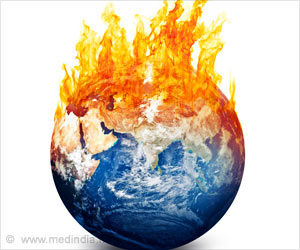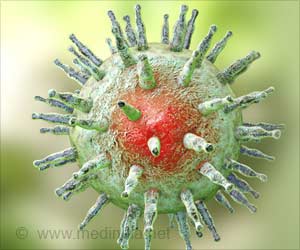“Dengue fever, a potentially lethal disease for which no treatment exists, is caused by a virus, spread by the bite of the mosquito Aedes aegypti. This mosquito is also responsible for transmitting a number of disease-causing viruses, including Zika, chikungunya and yellow fever,” said Elizabeth McGraw, professor and head of the Department of Biology, Penn State. “Aided by increasing urbanization and climate change, this mosquito’s range is expected to overlap with 50% of the world’s population by 2050, dramatically increasing the number of people who could potentially be exposed to these viruses.”
‘At higher temperatures, while the dengue virus may replicate faster, the study suggests that a corresponding reduction in mosquito thermal tolerance may act as a counterforce on mosquito survival that could help to reduce transmission and potentially human disease incidence in hotter, more climate-variable regions.’
In recent years, research groups around the world have attempted to control these viruses by infecting Ae. aegypti with the bacterium Wolbachia pipientis and then releasing the mosquitoes into the environment, McGraw explained.
“Wolbachia have been shown to prevent viruses, including dengue, from replicating inside mosquitoes,” she said. “Importantly, Wolbachia are passed down to the mosquitoes’ offspring, making them a self-propagating and lower-maintenance approach to disease control in the field.”
McGraw noted that both dengue virus and Wolbachia infect a variety of tissues throughout a mosquito’s body, and although they are not toxic, they do evoke an immune stress response.
“Since mosquitoes that are infected with dengue virus and/or Wolbachia are already suffering a stress response, we thought that they would be less well equipped to deal with an additional stressor, such as heat,” she said.
To investigate the effects of heat on dengue and Wolbachia-infected mosquitoes, the team placed infected mosquitoes in sealed vials and then submerged the vials into a water bath heated to 42°C — a realistic temperature extreme that a mosquito might encounter in the wild. The researchers then measured how long it took for the mosquitoes to become immobilized and compared the time to uninfected control mosquitoes. Their findings appear today (July 22) in the journal PLOS Neglected Tropical Diseases.
“After a lot of trial and error, we were successfully able to adapt a heat-based physiological assay commonly used in Drosophila [a model fruit fly species] to our mosquito species to examine the impact of both dengue virus and Wolbachia infections on thermal sensitivity,” said Fhallon Ware-Gilmore, graduate student in the Department of Entomology and Center for infectious Disease Dynamics at Penn State who led the project.
The team found that mosquitoes infected with dengue virus showed greater sensitivity to heat; they became immobilized almost three times faster than uninfected mosquitoes when placed in the hot water bath. Similarly, mosquitoes infected with Wolbachia became immobilized four times faster than uninfected mosquitoes.
Interestingly, Ware-Gilmore said, the two agents — dengue virus and Wolbachia bacteria — did not have an additive effect on mosquito thermal tolerance.
“You might expect that mosquitoes infected with both dengue virus and Wolbachia might become immobilized even faster than mosquitoes infected with only one or the other microbe, but we did not find an additive effect,” she said. “We are, however, the first to show that viral infection can affect mosquito thermal tolerance, specifically by reducing mosquito survival during exposure to high heat. And, while there are some known interactions between heat and Wolbachia, particularly in immature stages, this is also the first study to show that adult infected-mosquitoes have reduced survival during heat stress.”
Ware-Gilmore noted that future climate models point to increasing frequencies of extreme temperature events, making short exposures to high temperatures a threat to the survival of dengue and Wolbachia infected mosquitoes.
Source: Eurekalert



